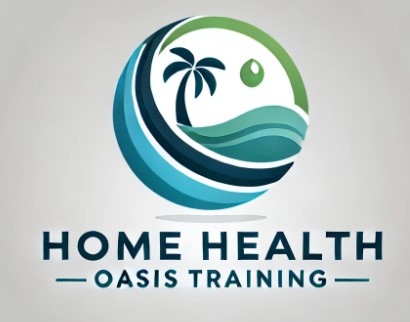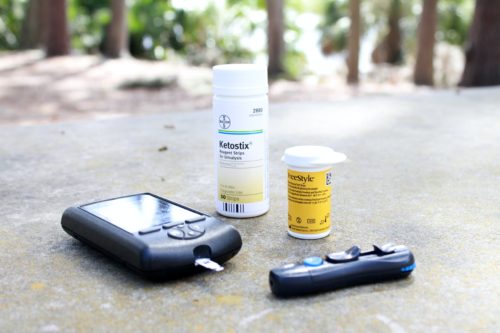The Importance of Reinforcement in Patient Education: How to Keep Learning Going
Patient education is one of the most fundamental components of healthcare. It serves as a bridge between the complex medical information provided by healthcare professionals and the patient’s ability to manage their health effectively. However, it’s not enough for patients to simply receive information during a doctor’s visit or hospital stay. For patient education to have lasting impact, it needs to be reinforced continually. This is where reinforcement strategies such as follow-up education, reminders, and creating continuous learning opportunities come into play.
In this blog, we will explore why reinforcement is essential in patient education, the role of follow-up education, and the effectiveness of reminders and ongoing learning opportunities in ensuring that patients not only understand but also apply key health messages to their daily lives.
The Power of Reinforcement in Patient Education
When it comes to learning, whether in a healthcare setting or elsewhere, we know that information retention is a challenge. Research shows that people tend to forget a significant portion of what they learn in the first 24 hours after receiving new information. After a week, that percentage increases. With such high rates of forgetfulness, reinforcement becomes essential to ensure that patients retain the key health messages provided to them.
Reinforcement in patient education involves revisiting and repeating important health information over time. This process helps patients solidify their understanding, making it more likely that they will incorporate the information into their daily routines. Without such reinforcement, patients may leave their doctor’s office with a wealth of advice, but over time, much of it may fade into the background, leaving them uncertain or less confident in managing their conditions.
The benefits of reinforcement are multifaceted. For one, it builds confidence. Patients who are reminded of the key points of their treatment or self-care plan feel more empowered. Secondly, reinforcement fosters long-term behavior change. Health conditions such as diabetes, hypertension, and chronic pain require ongoing self-management, and repeated learning ensures that patients stay on track with lifestyle changes, medication regimens, and other health interventions.
Ultimately, reinforcement encourages patients to take ownership of their health, providing them with the necessary tools to succeed and make informed decisions.
Follow-Up Education: Keeping the Dialogue Open
Follow-up education is a cornerstone of effective patient education because it creates ongoing opportunities to reinforce key health messages. Follow-up can take various forms, from post-appointment phone calls and emails to virtual check-ins or in-person follow-up visits. Each form of follow-up allows healthcare professionals to revisit the information shared during the initial consultation and provide patients with the support they need to continue learning.
Why is follow-up education so important?
-
Clarifying Confusion: Often, patients leave a doctor’s appointment with lingering questions or confusion. Whether it’s about understanding their medication instructions, lifestyle recommendations, or follow-up steps, patients may need additional clarification after the appointment. Follow-up education provides an opportunity for healthcare providers to clear up any confusion and ensure that patients are on the right path.
-
Reinforcing Messages: Health information, especially about chronic diseases, can be overwhelming. Follow-up education allows healthcare providers to reinforce key points, such as the importance of medication adherence, proper diet, or physical activity. By revisiting these topics periodically, patients are more likely to remember them and take them seriously.
-
Personalizing the Approach: Every patient is different, and their needs evolve over time. A follow-up visit gives healthcare providers the chance to tailor their messages to the individual patient’s circumstances. For example, if a patient is struggling with a specific aspect of their care, follow-up education can offer more personalized advice or alternative strategies that better suit their lifestyle.
-
Building Trust and Engagement: When patients see that their healthcare team is invested in their progress, it strengthens the relationship between the patient and provider. Follow-up education is an essential part of building trust. It shows that the provider cares about the patient’s well-being beyond the initial encounter. This engagement can improve compliance with treatment and health outcomes.
Types of Follow-Up Education
Follow-up education can take many forms. The choice of method depends on the patient’s needs, preferences, and available resources. Some of the most common follow-up methods include:
-
Phone Calls: Simple phone calls from healthcare providers or nurses to check in with the patient can provide reassurance, answer questions, and remind the patient of important health information.
-
Emails and Texts: For some patients, particularly younger or tech-savvy individuals, emails or text messages serve as a quick, easy way to reinforce education. Healthcare providers can send out reminders about medication schedules, exercise plans, or nutrition goals.
-
Video Consultations: Telehealth has grown in popularity, and follow-up consultations via video call allow patients to interact with their healthcare providers in real-time. This method allows for face-to-face communication, which can be crucial for building rapport and ensuring clarity of instructions.
-
Written Materials: While not as interactive as other forms of follow-up, sending patients home with written materials—such as brochures, pamphlets, or handouts with key points—ensures they have a tangible reference to look back on. These materials can be accompanied by phone calls or emails to address any questions that arise.
The Role of Reminders in Patient Education
In a world where patients juggle busy lives, remembering important health information and keeping track of daily tasks can be difficult. Reminders are one of the most effective tools for reinforcing education and ensuring that patients adhere to treatment plans. Reminders help nudge patients toward positive health behaviors by acting as cues for action.
The impact of reminders on patient behavior is significant. Research has shown that patients who receive reminder messages are more likely to adhere to medical recommendations, including medication schedules, follow-up appointments, and lifestyle changes. Reminders can also reduce the likelihood of missed appointments, incorrect medication usage, or dietary mistakes.
Types of Reminders
Reminders can take many forms, depending on the patient’s preference and the healthcare provider’s resources. Some of the most common reminder strategies include:
-
Automated Text Messages or Emails: Simple, timely reminders can be sent automatically via text or email. For example, a text reminder about a patient’s next appointment or a daily reminder to take their medication can keep important tasks on the patient’s radar.
-
Medication Management Apps: Technology has made it easier for patients to stay on top of their health with apps that send reminders for medications, exercise, and even doctor visits. These apps also allow patients to track their progress, which can increase motivation and engagement.
-
Phone Call Reminders: Personalized phone calls from healthcare providers, especially for more complex treatment regimens, can add a personal touch that feels more engaging than a simple text message.
-
Visual Cues: Physical reminders, such as a note on the fridge, a calendar, or a reminder sticker on a medication bottle, can help prompt the patient to follow through on key health behaviors.
Creating Continuous Learning Opportunities
Health education should not be a one-time event but a continuous process. Continuous learning opportunities allow patients to stay engaged with their health, keep up with the latest information, and adapt to new challenges or changes in their condition. For example, as new guidelines emerge or as a patient’s condition evolves, ongoing education ensures that they stay informed and empowered to make the best decisions for their health.
How can healthcare providers create continuous learning opportunities?
-
Workshops and Classes: Community health workshops or educational classes offer patients the chance to learn more about specific topics such as diabetes management, heart health, nutrition, or stress management. These events provide not only education but also the opportunity to connect with other patients facing similar challenges.
-
Online Resources and Webinars: With the rise of digital tools, healthcare providers can create online courses, webinars, or informational videos for patients to access at their convenience. These resources provide flexibility and allow patients to engage in learning on their own terms.
-
Patient Support Groups: For chronic conditions, patient support groups can offer a valuable space for sharing information, experiences, and tips. Ongoing group meetings, either in person or online, give patients the chance to learn from one another and receive ongoing support.
-
Follow-Up Educational Materials: Whether digital or print, educational materials should be shared with patients at multiple points during their care journey. Providing patients with updated resources over time ensures they continue to learn about managing their health.
Conclusion
In patient education, information without reinforcement is unlikely to result in lasting change. To ensure that patients are equipped with the knowledge and tools they need to manage their health, reinforcement is key. Follow-up education, reminders, and continuous learning opportunities all play an integral role in reinforcing key health messages and enabling patients to make informed, confident decisions about their care.
Healthcare providers who prioritize reinforcement strategies not only enhance patient comprehension but also improve treatment adherence and health outcomes. By keeping the dialogue open, sending timely reminders, and offering ongoing learning opportunities, healthcare professionals can create a supportive, empowering environment that encourages long-term health and well-being for patients.
Editor's Pick
Leave A Comment
Related Posts
- Published On: June 2, 2024
Transition from OASIS-E to OASIS-E1: Key Changes and Implications for […]
- Published On: May 28, 2024
Importance of Clinical Narrative and Nurse Teachings while Documenting Home Health OASIS Assessments
Importance of Clinical Narrative and Nurse Teachings while Documenting Home […]
- Published On: April 29, 2025
Navigating the Complexities of Medicare and Medicaid Reimbursement for Home […]
- Published On: April 27, 2025
Engaging Your Team Around the IPR: Turning Data into Motivation […]
- Published On: April 27, 2025
Engaging Your Team Around the IPR: Turning Data into Motivation […]

